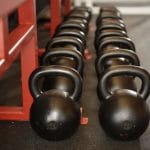Santa Claus has settled into another 350 days of hard work in preparation for one very long night of delivering toys and gifts to kids, and adults, all around the world. This amazing feat, even with the aid of some fast-flying reindeer, requires that Santa be in peak condition. In fact, he really can’t have the BMI we associate with him – a chubby, cherubic guy – if we’re to agree that he has to scoot down chimneys and flues with speed and grace enough to not awaken everyone in the house.
Santa’s one very lean, fit guy indeed!
That said, I’m glad I’m not his personal fitness trainer. For one thing, his diet is terrible, at least Christmas week. For another, training in the North Pole can’t be fun even if his home and studio are heated. Unless, that is, I got a room at one of those places.
The other is that the demands on the poor guy, to go all out once a year, for hundreds of years, no less, are such that his trainer would have to be more knowledgeable and more demanding than I am.
That said, the one thing I have learned from years of experience – and now that Bill Nagel has passed away (three years ago), I am the longest-serving personal trainer in Tennessee – is that any client, in fact ALL clients, become athletes simply by training.
You see, in accordance with other writings of mine, the very act of doing exercise is an athletic act. Like any athlete, any client is invariably trying to improve his/her own performance of whatever tasks they like or need to do; they’re trying to maintain their current status in whatever activities they love or must do; and/or they are trying to prevent injuries so that they can continue doing those very activities for many more years.
In other words, all fitness training is about enhancing function, not just appearances.

You see, being an athlete is a state of mind, not just a state of body. It entails a certain measure of discipline, regimentation – making appointments easily define these. And even if the client doesn’t do anything other than what he/she does while with the trainer to meet goals, being a client requires perseverance and persistence in the face of obstacles and challenges.
You can see the athletic mindset when it’s presented this way, right?
The way I see it, athletes accept a little pain in order to make the effort to progress. Yes, it’s a ‘no pain, no gain’ attitude; but it doesn’t require pain to gain – it just comes with the territory.
While athletes accept some pain, and move on or through it, non-athletes shirk from risk of pain, and from pain itself, seeking a safety from which they cannot really be. If this sounds negative, or punitive, that’s not my intent.
Rather, think of fitness training, and athletic conditioning, as a progressive mind-altering challenge that hardens the body and the spirit against the trials and travails of life outside the gym, off the court and off the field.
Some use religion for this; some use monetary wealth; some go to shrinks; some use drugs or alcohol. But none of these confer the mass benefits of exercise training that includes cardiac health, cancer prevention, musculoskeletal integrity and function, cognitive enhancement, etc etc.
In other words, exercise training, even if you don’t trim down, tone up, lose weight or look great is so much more than the physical we see in the mirror. It’s the physical we feel inside, when we do look in the mirror and we see a body and mind capable of withstanding just a little more of what life has to throw at it.
That’s the beauty of being an athlete.















